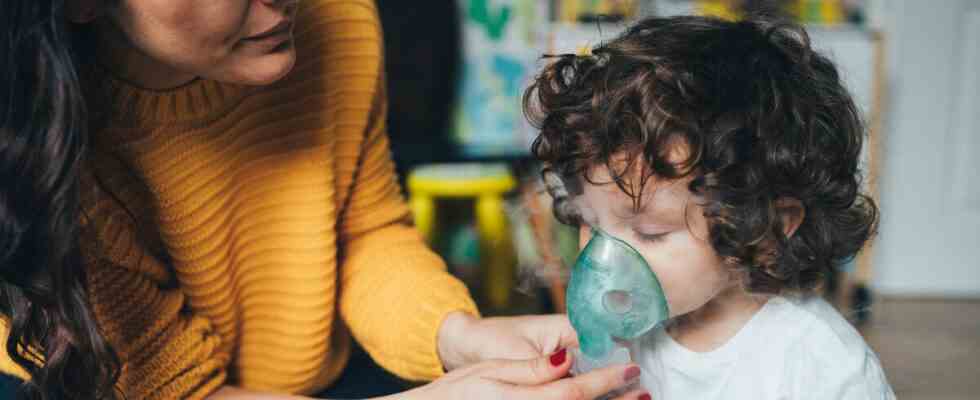Pneumonia, also known as pneumonia, is a disease of the respiratory tract. Acute inflammation is particularly common in childhood. The most common cause of pneumonia are pneumococci. In addition to inflammation of the lungs, the bacteria can also cause a middle ear infection.
>> Pneumonias in adults
How contagious is pneumonia in children?
Children with this condition are potentially contagious and can easily pass the infectious agent through coughing. Other children in particular infect each other through coughing and sneezing, for example in schools, kindergartens, homes or on playgrounds.
Through the droplet infection, the pathogens get into the air and are then inhaled by other children. Direct transmission via the mucous membranes is also possible, for example by kissing. The risk of infection is particularly high in children and babies because their immune systems are still developing.
People over the age of 65 are also at increased risk of pneumonia. However, not everyone who comes into contact with the pathogen becomes ill.
>> Nosebleeds in children: This is important now
Symptoms: Does my child have pneumonia?
Do you suspect your child has pneumonia? The following signs can indicate the infection:
- stomach pain
- Cough
- chills
- Fever
- painful breathing
- disorientation
- nausea and vomiting
- Refusal to drink (especially in infants)
- increased heartbeat
- Shortness of breath with so-called nostrils (rapid movement of the child’s nostrils when breathing)
Important: The symptoms of pneumonia in children can vary greatly in individual cases.
Course and duration of the infection
How long the infection lasts in your child depends on the individual state of health and the specific type of pathogen. As a rule, most pneumonia in children is after about seven to ten days subsided again. Provided there are no complications. Bacterial pneumonia often goes with a high fever (> 39 °C).
>> Get rid of a cold in children quickly: this is how it works at home
How is the infection diagnosed?
The diagnosis of pneumonia is similar in children and adults. After an anamnesis interview, the doctor listens to the child’s lungs with a stethoscope. Specific breathing sounds provide information about whether pneumonia is present. In addition, the following examination methods can be used for the diagnosis:
- blood analysis
- X-ray examination of the thorax (chest)
- Ultrasound examination (sonography)
- Lung reflection (bronchoscopy)

